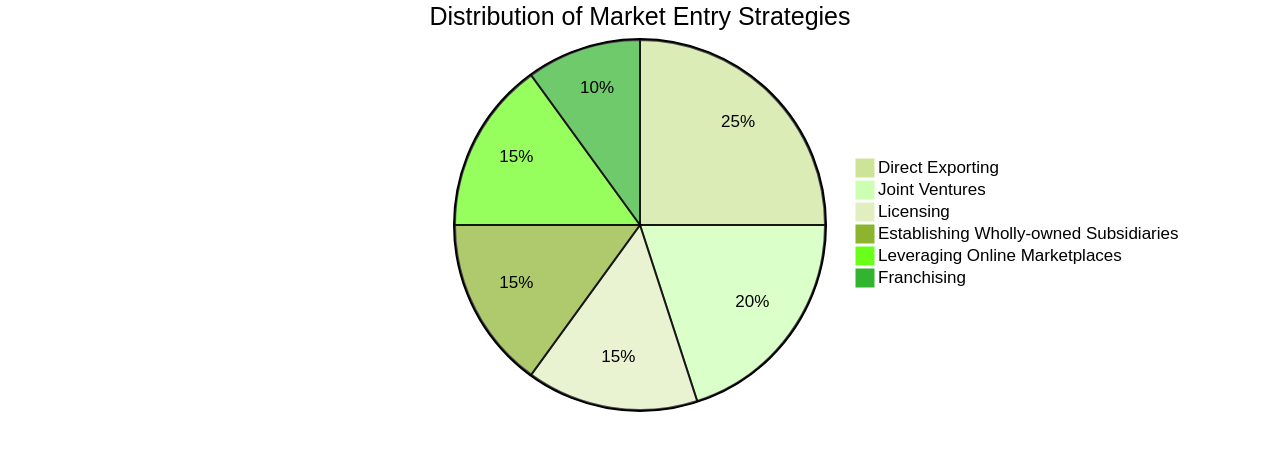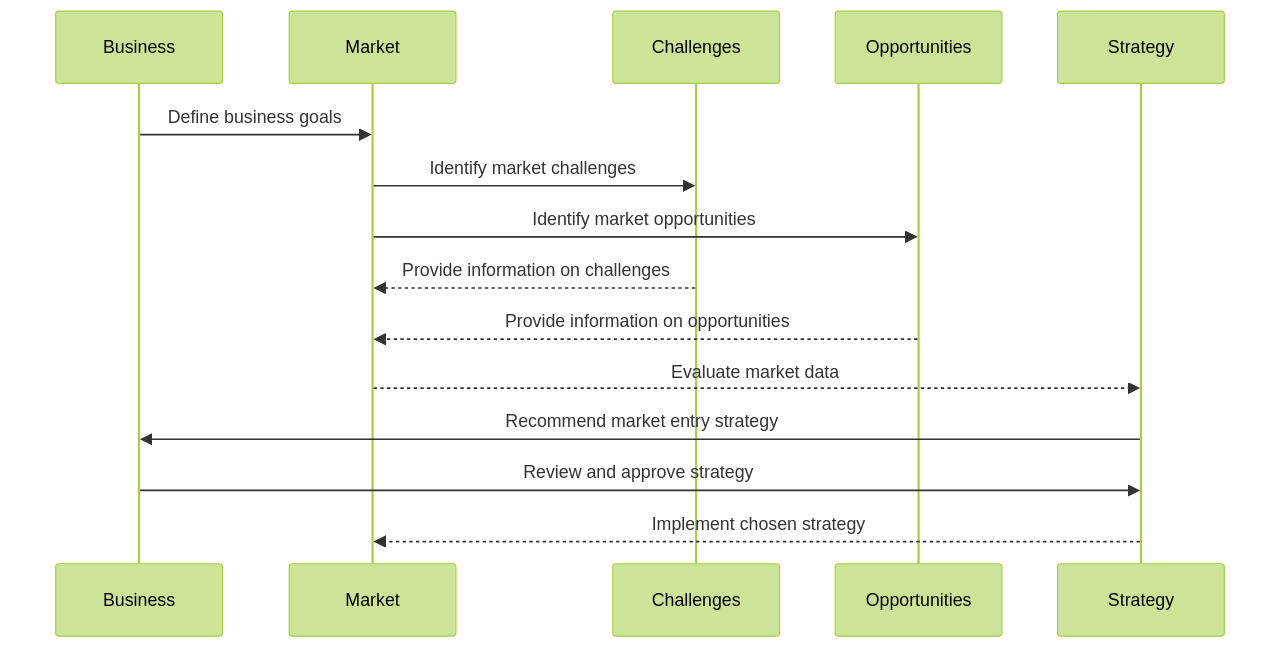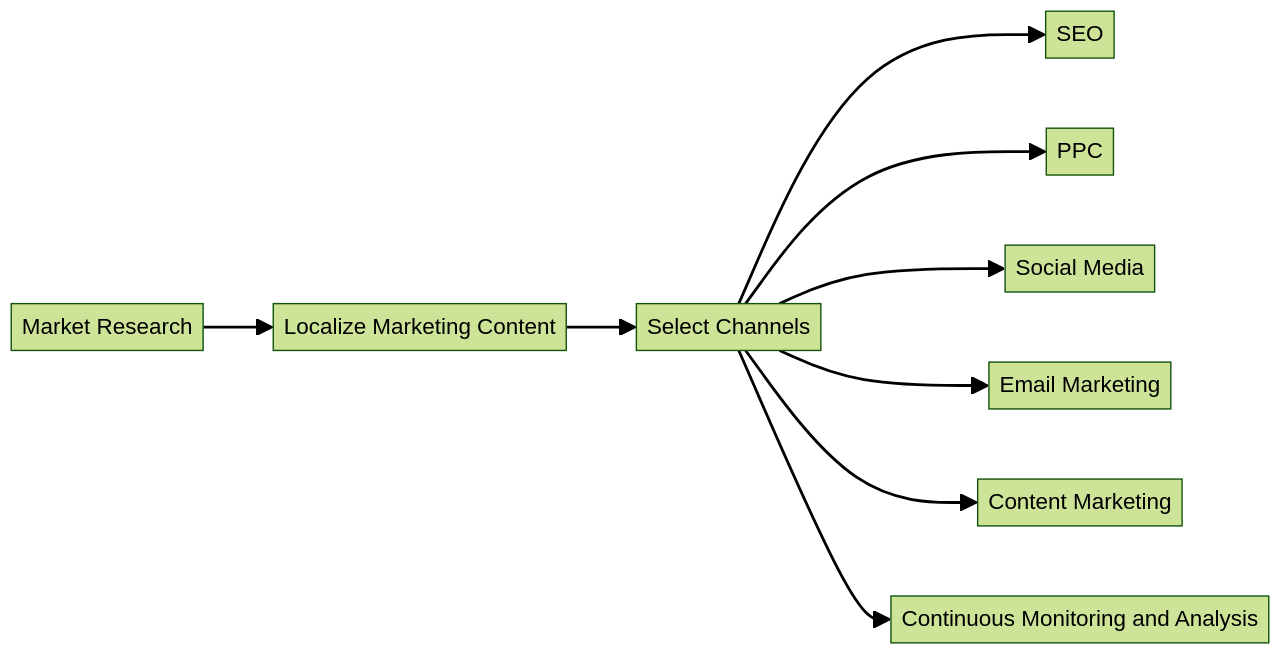Introduction
The global expansion of e-commerce businesses requires a deep understanding of international market entry strategies. These strategies, such as direct exporting, licensing, franchising, joint ventures, and establishing subsidiaries, are influenced by various factors like market conditions, competition, and resources. In this article, we will explore the importance of choosing the right strategy for global market entry and how it can impact your business's growth and success. We will also discuss best practices for navigating global markets in e-commerce, including thorough market research, understanding the competitive landscape, and adapting your e-commerce platform to suit the needs of each target market. By following these practices, businesses can enhance their chances of success when expanding into international markets.
In the pursuit of global expansion for e-commerce businesses, selecting the right market entry strategy is crucial. It can minimize risks, maximize return on investment, and give a competitive edge. This article will delve into the case study of BestToolbars, a successful e-commerce business that adopted a blend of market entry strategies and harnessed the power of digital marketing to expand globally. By examining their strategies and successes, we can gain valuable insights into effective global expansion strategies. Additionally, we will explore key takeaways and best practices for navigating global markets in e-commerce, including conducting thorough market research, tailoring marketing strategies to suit the local market, building partnerships with local entities, and complying with local laws and regulations. By following these practices, businesses can overcome challenges and achieve success in their global expansion efforts.
1. Understanding International Market Entry Strategies for E-commerce Businesses
Global expansion of an e-commerce business necessitates a comprehensive understanding of various international market entry strategies. These strategies are diverse and may include direct exporting, licensing, franchising, forming joint ventures, or establishing wholly-owned subsidiaries.
The selection of a strategy is influenced by a multitude of factors, including market conditions, competition, legal and regulatory environment, and the resources and capabilities of your business. A comprehensive analysis of each strategy's advantages and disadvantages is essential to identify the most appropriate approach for your business.
Direct exporting is a strategy that involves selling products directly to customers in foreign markets. This enables e-commerce businesses to leverage their online platforms to reach international customers and ship products to their desired locations. However, direct exporting often involves higher costs compared to using intermediaries or local distributors. Businesses need to invest in logistics, shipping, customs, and marketing to enter and serve international markets. Moreover, businesses need to invest time and resources in understanding the target market's cultural nuances, customer preferences, and local regulations to successfully sell their products in a foreign market.
Licensing and franchising are other strategies that e-commerce businesses can utilize to enter international markets. By licensing their brand or franchising their business model to local partners, businesses can tap into the local expertise and infrastructure of these partners while expanding their reach.

There are various licensing options available for expanding an e-commerce business globally. These options can include obtaining the necessary licenses and permits to operate in different countries, partnering with local distributors or retailers, or even setting up subsidiary companies in target markets.
Collaborating with local companies through joint ventures or strategic partnerships is another strategy that can provide e-commerce businesses with access to local knowledge, distribution channels, and customer base. This strategy can help businesses navigate the complexities of international markets more effectively. However, there are challenges associated with establishing joint ventures in e-commerce, such as potential conflicts and disagreements between the partners, especially when it comes to decision-making and control over the venture.
For e-commerce businesses with significant resources and a long-term commitment to international expansion, setting up subsidiaries or acquiring local companies in target markets can be a viable strategy. This allows businesses to establish a physical presence and gain a deeper understanding of the local market dynamics. By establishing a wholly-owned subsidiary, a company can have full control over its operations in a foreign market. This allows the company to adapt its e-commerce platform and business model to the specific needs and preferences of the local market.
Finally, leveraging popular online marketplaces in target countries can be an effective way for e-commerce businesses to enter international markets. These marketplaces provide access to a large customer base and existing infrastructure, reducing the barriers to entry.
In conclusion, it is important for e-commerce businesses to thoroughly research and evaluate the suitability of these market entry strategies based on their specific goals, resources, and target markets. Understanding the local regulations, cultural nuances, and consumer preferences is crucial for successful market entry.
2. The Importance of Choosing the Right Strategy for Global Market Entry
In the pursuit of global expansion for your e-commerce business, the selection of an apt market entry strategy holds immense significance.

It is this strategy that aids you in maneuvering through the intricacies of international markets while minimizing potential risks and maximizing the return on investment. Furthermore, an effective strategy can give you a competitive edge, allowing you to bolster your market presence, enhance brand awareness, and attract and retain customers.
To ensure the chosen strategy aligns with your business objectives, it is essential to thoroughly evaluate each one, taking into account factors such as your business goals, characteristics of your target market, and potential market challenges and opportunities.
In terms of choosing a market entry strategy, certain best practices can be beneficial. Conducting an in-depth market research to identify potential target markets and understanding their cultural, economic, and regulatory dynamics is a crucial first step. This would help ascertain the suitability of each market for your e-commerce business.
Assessing the competitive landscape in each target market is another key practice. Gaining insights into the existing players, their strategies, and the demand for your products or services will guide your decisions about market entry.
Understanding the logistical and operational requirements of entering each market is also vital. Factors such as shipping, customs regulations, payment methods, and customer service capabilities need to be evaluated. Tailoring your e-commerce platform and processes to cater to the specific needs of each market can significantly boost your chances of success.
Collaborating with local partners or recruiting local talent can also prove advantageous. They can provide valuable insights into the local market, assist in navigating cultural nuances, and establish strong relationships with suppliers and customers.
Continuous monitoring and evaluation of your e-commerce business performance in each market is also essential. Regular reviews of key metrics, customer feedback, and market trends aid in identifying opportunities for improvement and making necessary adjustments to your market entry strategy.
By adhering to these best practices, e-commerce businesses can enhance their chances of success when expanding into global markets. It is important to remember that every market has its own unique risks and opportunities. By following these tips and adapting to the local market, you can mitigate risks and increase the chances of success in international markets.
3. Harnessing the Power of Digital Marketing in Foreign Market Entry
Extending your e-commerce business to international markets is a significant step towards growth.

To achieve success, a robust digital marketing strategy is crucial. This strategy should be tailored to the target audience in each foreign market, factoring in their culture, online behavior, and local competition. It is a process that begins with thorough market research and extends to the localization of your marketing content.
Localization, the process of adapting your content, language, and imagery to a specific market, is key to capturing the attention of your foreign customers. For instance, translating your website content, leveraging local influencers, and optimizing keywords for local search engines can significantly enhance the effectiveness of your marketing campaigns.
Building strong partnerships with local influencers or industry associations can also bolster your brand's visibility, credibility, and reach. These partnerships can provide access to a wider network of potential customers and can be a valuable asset in your foreign market entry.
Your digital marketing strategy should incorporate various channels, including SEO, PPC, social media marketing, email marketing, and content marketing. Each of these avenues offers unique opportunities to connect with your audience.
SEO, for instance, involves thorough keyword research and website optimization to improve search engine rankings in the target market. This includes creating localized versions of your website to cater to specific needs and preferences.
PPC, on the other hand, enables you to target specific audiences in different countries. This can be achieved through localized keyword research, ad localization, geo-targeting, and multilingual landing pages. Regular monitoring and optimization are crucial to ensure the effectiveness of your PPC campaigns.
Social media marketing is another powerful tool. Understanding the social media preferences of your target audience can help tailor your strategy and content, creating a stronger connection with your global audience. Engaging content, social media advertising, and active participation in relevant online communities are key to building brand awareness and credibility.
Email marketing, when done right, can be an effective way to keep your customers informed about your latest products and offers. Segmenting your email list based on the target market's demographics, interests, and preferences can allow for more personalized and relevant content. Localizing your emails and using automation tools can also enhance the effectiveness of your email marketing efforts.
Content marketing strategies, too, should consider cultural differences, language preferences, and local market trends. Localization of content can help engage international customers, and leveraging social media platforms and influencers can expand the reach of your content.
Lastly, it's essential to continuously monitor and analyze the performance of your digital marketing campaigns. This will provide insights into what's working and what's not, allowing for necessary adjustments and optimizations.
Remember, the success of your global market entry relies on a comprehensive understanding of the target market, strategic partnerships, and data-driven decision making. By implementing these best practices, you can effectively promote your e-commerce business in foreign markets and ensure long-term success.
4. Case Study: Successful E-commerce Business Expansion Strategies
Delving into the success story of BestToolbars, a trailblazing company that provides bespoke web and mobile app solutions for e-commerce businesses, offers invaluable insights into effective global expansion strategies. Their global footprint now includes 20 countries, and they boast over 700 successful projects, a testament to their strategic approach to global expansion.
Their global leap was achieved by adopting a blend of market entry strategies, notably direct exporting and forming joint ventures. Direct exporting, which involves selling products directly to customers in foreign markets, allowed BestToolbars to control their pricing strategy, distribution, and customer experience, thereby quickly adapting to varying market conditions and customer preferences.
The joint venture strategy, on the other hand, was facilitated by harmonious collaboration between software developers, designers, and engineers who developed innovative solutions tailored to specific market needs. By leveraging consulting services and accessing top-tier talent, BestToolBars was able to speed up the development process and test market hypotheses efficiently. They also integrated these professionals into their existing teams, ensuring quick proof of concept, initial project research, bug fixes, and market alignment.
In addition to adopting appropriate market entry strategies, BestToolBars harnessed the power of digital marketing to elevate their online visibility, engage with their audience, and drive online sales. They employed a data-driven approach, continually analyzing and tracking the performance of their marketing efforts to optimize strategies as needed. Their digital marketing strategy included SEO optimization, social media advertising, email marketing campaigns, and collaborations with influencers or industry experts.
The success of BestToolBars underscores the importance of understanding the target market, adopting a suitable market entry strategy, and leveraging digital marketing. While each market may present unique challenges, the lessons from BestToolBars' global expansion can guide e-commerce businesses looking to scale their operations globally.
5. Key Takeaways: Best Practices for Navigating Global Markets in E-commerce
The journey towards global expansion in the e-commerce sector is a strategic endeavor. It involves careful selection of international market entry strategies that are the most suitable for your business. Digital marketing plays a pivotal role in promoting your business in foreign markets. Learning from successful e-commerce business expansion strategies, such as that of BestToolbars, can provide valuable insights. By adhering to these practices, navigating global markets becomes manageable, challenges can be overcome, and success in e-commerce business expansion can be achieved.
To ensure a successful entry into international markets, a set of best practices should be followed. These include conducting thorough market research of the target country's culture, consumer behavior, and local regulations to identify potential opportunities and challenges. Tailoring your e-commerce platform, products, and marketing strategies to suit the local market is another critical step. This might involve translating your website into the local language, accepting local payment methods, and understanding local consumer preferences.
Building partnerships with local entities such as distributors or influencers can help establish your brand presence and gain credibility in the target market. These partnerships can also provide insights into the local market and help navigate any cultural or regulatory barriers. Investing in customer support is essential for international customers. Offering multilingual support channels and ensuring prompt and effective communication to address any concerns or issues is beneficial.
Understanding and complying with local laws and regulations related to e-commerce, data protection, consumer rights, and taxation can help avoid legal complications and build trust with customers. Continuously monitoring market trends, consumer behavior, and competition in the target market is also essential. Be prepared to adapt your strategies based on market feedback and changing dynamics.
Looking at the case of BestToolbars, they offer consultation services and access to top-tier talent for developing and testing innovative solutions. They also assist in launching minimum viable products (MVPs), conducting market fit testing, and providing flexible demand contractors to speed up development. They aim to align their products with the market and offer full outsourcing options.
In terms of digital marketing strategies for foreign markets, website localization, social media marketing, search engine optimization (SEO), influencer marketing, paid advertising, and email marketing are commonly used. Each strategy should be tailored to the specific cultural and linguistic nuances of the target market.
By following these best practices and strategies, e-commerce businesses can increase their chances of success when entering international markets and overcoming the challenges of global e-commerce expansion.
Conclusion
In conclusion, selecting the right market entry strategy is crucial for e-commerce businesses aiming for global expansion. The choice of strategy can minimize risks, maximize return on investment, and provide a competitive edge. Direct exporting, licensing, franchising, joint ventures, and establishing subsidiaries are all viable options, each with its own advantages and considerations. Thorough market research, understanding the competitive landscape, and adapting to local regulations and preferences are key best practices for navigating global markets in e-commerce. By following these practices, businesses can enhance their chances of success when expanding into international markets.
The importance of choosing the right strategy for global market entry cannot be overstated. It can significantly impact a business's growth and success. By examining successful case studies like BestToolbars, we gain valuable insights into effective strategies for global expansion. Harnessing the power of digital marketing is also crucial in foreign market entry. Tailoring marketing strategies to suit the local market, building partnerships with local entities, and complying with local laws and regulations are key factors to consider. With careful planning and execution of these strategies and best practices, e-commerce businesses can overcome challenges and achieve success in their global expansion efforts.





